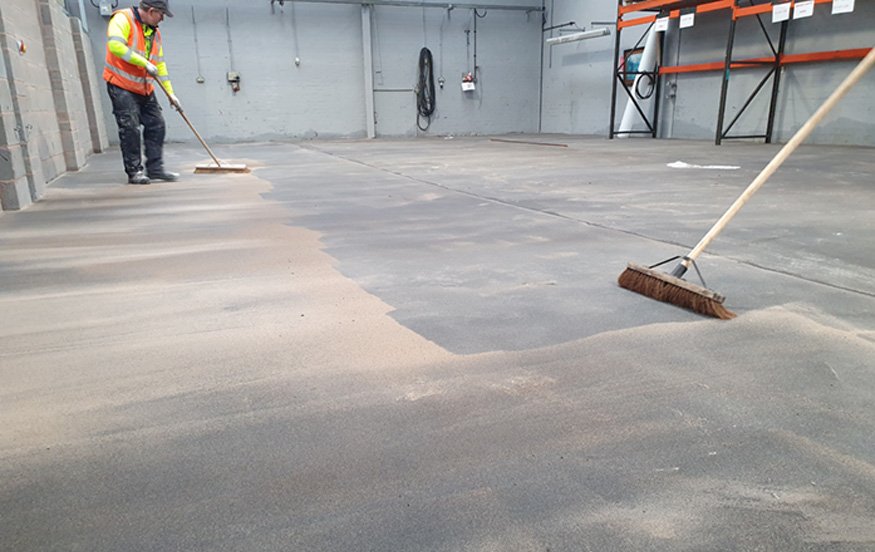If concrete floors are not protected in stable areas, they can quickly deteriorate due to attack from fluids such as urea along with cleaning and disinfecting agents. A number of floor coatings can be applied to concrete stable floors, but many need to be regularlyrenewed in order to restore their protective and aesthetic qualities.
In several European countries such as Germany, Denmark and the Netherlands, mastic asphalt has a long tradition of being used to protect stable floors, and here in the UK more agricultural owners are recognising the benefits of using mastic asphalt as an effective long-term protective flooring solution.
Mastic asphalt is one of the world’s most traditional construction materials and it is ideal for application to surfaces where a smooth, seamless, durable and waterproof surface is required. Impermeable and free of cavities, it is easy to clean and cannot be attacked by vermin, bacteria or conditions of high humidity.
 Due to fine sanding during application, mastic asphalt is skid resistant which is especially important for dairy cattle keeping. Due to mechanical stresses, concrete surfaces lose grip and become smoother as opposed to mastic asphalt, which becomes rougher by tendency.
Due to fine sanding during application, mastic asphalt is skid resistant which is especially important for dairy cattle keeping. Due to mechanical stresses, concrete surfaces lose grip and become smoother as opposed to mastic asphalt, which becomes rougher by tendency.
By adding suitable aggregates, mastic asphalt can be made acid resistant to counteract attack from urine or silage saps. To avoid animals such as cows getting injuries on their hooves due to rough surfaces caused by abrasion, round grain aggregates can be used instead of sharp-edged chippings. When float finishing, the mastic asphalt application contractor can also incorporate natural sand to prevent injuries on hooves.
In comparison with concrete, mastic asphalt has reduced thermal conductivity, which means little heat is taken away from animals on lying surfaces. If animals have the choice between lying on a concrete and asphalt surface, more often than not they will lie on a mastic asphalt surface. Mastic asphalt is also highly wear resistant, and is able to withstand mechanical cleaning without deteriorating.
During application mastic asphalt is exceptionally rapid curing and stables can be used as normal the day after application, meaning that facilities do not have to be out of service for any length of time. If mastic asphalt ever needs repairing, spot repairs can be quickly carried out with minimal disruption.
As mastic asphalt is seamless, it is far easier to clean than many other floor coverings with joints. As a general rule, joints are only necessary at rising units such as walls, penetrations such as floor drains or when coverings change.
This article featured within the April 2021 edition of Farming Monthly – click here to view the article (see page 41)

